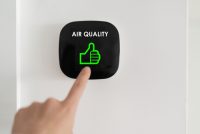OSHA Ranks Top 10 Workplace Safety Violations of FY 2021
The Occupational Safety and Health Administration (OSHA) has announced its preliminary Top 10 most frequently cited workplace safety standards for fiscal year 2021. Patrick Kapust, Deputy Director of OSHA’s Directorate of Enforcement Programs, presented the list virtually during the 2021 NSC Safety Congress & Expo, a tradeshow held live in Orlando, Fla., and virtually Oct. […]










